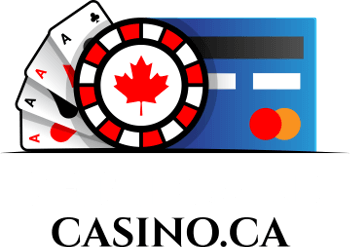How to Play 5 Card Stud Rules & Tips to Win

5 Steps to Play and Win 5 Card Stud
The rules of 5 card stud are simple on the surface. Most of the underlying rules pertain to betting – stakes, antes, bring-in, etc. In the following passages, you’ll learn how to play 5 Card Stud, and how to evaluate your hands, as well as your opponents, without losing sight of realistic expectations. Click each step for more info.
- The Rules: 5 Card Stud is a single-deck game that can accommodate as many as 10 players. Throughout the game, each player will receive 5 cards with which to form the best possible poker hand…
- Ante & Bring-In: Stud poker is played with ante bets, instead of blinds. The ante is a fractional bet placed by each player before the game begins. The player with the highest door card will post the bring-in…
- Playing the Game: Learning the order of events is the best way to understand how a game is played. Following antes, each player receives two cards; one face-down “hole” card, and one face-up “door” card…
- Bet or Fold: There is only one decision to be made in 5 Card Stud – play or fold. Without much to hide, the trick is often figuring out who has the best hand, and who is falsely representing the best hand…
- Realistic Expectations: High Pair is the most common winner in 5 Card Stud, followed by High Card. We’ll take a quick look at the mathematical probabilities, and the value of calculating pot odds when faced…
|
Disclaimer – Not all forms of gambling are legal in all provinces of Canada. The legal age to gamble also varies by province. Breaking the law is a serious matter. The information provided on this website is meant for educational purposes only, and we will not be held liable for any irresponsible / illegal activity on your part. Know the gambling laws in your province and follow them. The following pages provide more information on Canadian gambling laws:
|
1. How to Play 5 Card Stud Poker |
|
5 Card Stud is a single-deck game that can accommodate as many as 10 players, but is more commonly played with 4-6. While most of the big-name poker sites offer 5 Card Stud online, you rarely find much traffic here. As for live poker rooms, forget about it. Your best bet at finding a game is to initiate your own home game, or set up private online poker game with friends. As the name implies, each player will receive a total of 5 cards over the course of the game. Stud games do not present a draw phase, so these are the only five cards you’ll have to work with. Everyone starts with two cards, followed by the first betting round. From there, each player receives one more card, followed by another betting round, until everyone eventually has a 5-card hand. If more than one player makes it to this point (a.k.a. the showdown) without folding, the highest ranking poker hand wins the pot. If all other players fold prior to a showdown, the last active player remaining automatically wins the pot, and the hand is over. |
2. Betting Structure: Stakes, Ante & Bring-In |
|
Stud poker isn’t like today’s more common Hold’em poker games. It is usually played in Fixed Limit (FL) or No Limit (NL) format, with the former being the standard. Stakes: The stakes of the game will determine how much a player can bet or raise at any given time. If the stakes are FL $1/$2, all bets and raises are $1 during the first two betting rounds, increasing to $2 for the last two betting rounds. NL stakes are similar, except that the low/high-end stakes depict the minimum bet/raise requirement. There is no cap on bets/raises. Antes: Stud poker is played with ante bets instead of blinds. The ante is a forced bet placed by each player before any cards are dealt. The size of the ante can vary. It might be the value of the smallest chip in play, or a fraction of the low-end stakes; often 1/5, 1/4 or 1/2. For example, if the stakes are $1/$2, all players might be required to “ante up” $0.25 (one-forth of $1). Bring-In: The bring-in is another forced bet that must be placed by the player with the highest door card (first face-up card), following the initial deal. If two players tie for the door card, the one closest to the dealer’s left places the bring-in. The bring-in bet is equal to the low-end stakes. All other players must at least call this bet to stay active in the hand. |
3. Playing 5 Card Stud – Order of Events |
| A typical game of FL 5 Card Stud is played as follows:
Ante: All players ante up. Initial Deal: Each player receives two cards. The first is the hole card, dealt face down. The second is the Door card, dealt face up. Bring-In: The player with the highest door card places the forced bring-in bet to kick off the first round of betting. Bring-in is equal to the low-end stakes. The first round of betting takes place, with each player thereafter calling, raising, or folding. All bets/raises must be equal to the low-end stakes. Third Street: Each player receives a third card, face-up, follow by another round of betting. Again, all bets/raises are equal to the low-end stakes. Fourth Street: A fourth card is dealt face-up to each player. Another round of betting ensures. From here on out, all bets/raises increase to match the high-end stakes. Fifth Street: A final card is dealt to each, again face up. The final betting round takes place. Showdown: Assuming more than one player remains, all active hands are revealed. The highest ranking 5-card poker hand wins the pot. |
4. To Bet, or Not to Bet? |
|
With no exchanging of cards, there is only one decision to be made in 5 Card Stud – play or fold. Hand evaluation is made relatively easy since you are always able to see every player’s hand, minus the hole card. Thus, you can easily identify every player’s potential best and worst hand, street by street. Consider what each player does have, versus what they could have. If they already have you beat, fold. If they could have you beat, and are betting strong enough to represent the winning hand, fold. If you’ve got them beat, you either need to make the call, or raise. If you have a hand that could easily be beaten, such as Ace high or a low pair, you need to bet aggressively. The more players you can convince to fold, the more likely you are to take the pot if it goes to a showdown. If you’ve got the nuts, slow down. Bet or call to keep as many players tagging along as possible. One way to determine whether it’s a good idea to bet or fold is to calculate the pot odds. This only works if you need an out to win. Maybe you have two high cards. Pairing either of them would be great. Every card that will help you win is an out. If you’re odds of being dealt an out are greater than the ratio of what is costs to bet, compared to the current size of the pot, then you’ve got good pot odds. It’s actually not that hard to do. |
5. Hand Evaluation: Lower Your Expectations |
|
The trick to hand evaluation is compare all other hands to your own. With all but one card showing at all times, you can often tell whether there’s any value in continuing. There are two ways to assume value in a hand. By having the best hand, or by representing the best hand. The first thing you need to know is that One Pair is the most common winner in a 5 Card Stud game, followed by High Card. Let’s take a quick look at the mathematical probabilities of 5 Card Stud. With just 5 cards, your odds of being dealt High Card (no Pair) are 50.12%. Your odds of being dealt One Pair are 42.26%. Two Pair comes in at 4.75%, and Three of a Kind 2.11%. The remaining 0.76% belongs to all higher hand ranks combined. Obviously, you need to set your expectations very low in this game. The more players there are, the more likely it is that a low pair will be beaten by a higher pair. The fewer players there are, the better Ace high looks. Keep this in mind when evaluating hands. As for representing the best hand (a.k.a. bluffing), it’s best done after receiving a good scare card. Maybe no one has anything higher than a Jack showing, and you’re dealt an Ace. Not only is that Ace good against other non-pair hands, if anyone believes you have another Ace in the hole, you could easily represent the nuts. For a really ballsy move, try raising the pot when you get the Ace scare card, and your opponent is already showing a pair. They have the better hand, and you know it, but betting with the confidence that you have them beat can easily convince them to fold. Do not do this often, as it’s a risky bluff. So long as you’ve played tight enough to instill fear in your opponents up to this point, it can be very effective. |
 Jackpotcity.com is our editorial pick for your gaming needs. Currently offering an entire suite of casino games, as well as a wide range of Canadian deposit options, JackPotCity truly offers world-class gaming.
Jackpotcity.com is our editorial pick for your gaming needs. Currently offering an entire suite of casino games, as well as a wide range of Canadian deposit options, JackPotCity truly offers world-class gaming.





